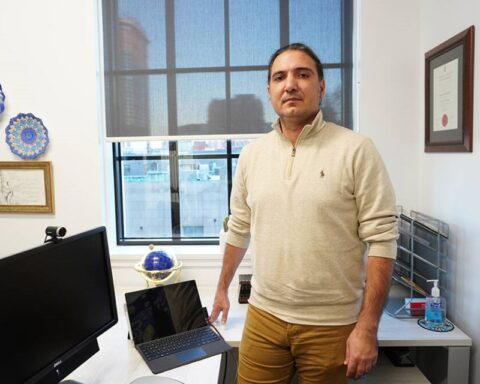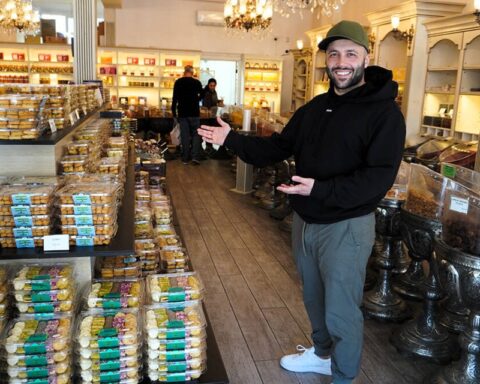It’s been over one month since images were published showing three-year-old Alan Kurdi’s body washed up on Turkish shores and Canadian support for intervention in the Syrian refugee crisis seems to only be gaining momentum.
However, the steep price tag attached to private sponsorship combined with the low number of refugees who have arrived on Canadian shores bring into question whether this impetus can continue.
Merlyna Lim, an assistant professor in Carleton University’s school of journalism and communication and the Canada Research Chair at the school’s Digital Media and Global Network Society, has done extensive research on how social movements and campaigns grow and shrink around the world.
“One obvious advantage is this kind of real-time response,” says Lim of how outbursts of attention online and in the media can affect initiatives and responses.
Campaigns like #BringBackOurGirls, #IdleNoMore and #Kony2012 epitomize the sort of ‘armchair activism’ that has been accused of making a lot of noise, but creating few actual results.
Lim describes how social media–fuelled campaigns, such as the ice bucket challenge that raised money for ALS research, can be positive if the end goal is low-risk – “like donating.”
“At the same time, there is a limitation to what [things like social media] can do,” she continues. “I think we’re spreading awareness. It’s great, but then what’s next?”
Campaigns like #BringBackOurGirls, #IdleNoMore and #Kony2012 epitomize the sort of ‘armchair activism’ that has been accused of making a lot of noise, but creating few actual results.
The Syrian civil war has been ongoing since 2011 and yet the issue wasn’t in the mainstream consciousness of Canadians until the pictures of Kurdi were published en masse. What followed was, as Lim describes, an “explosion of attention.”
She worries that the nuances of the conflict are often more complex than is presented in the media or in any “hashtag activism” campaigns. This can be problematic when attempting to create long-lasting change.
This time is different
The Canadian response to the Syrian crisis, although catalyzed by the distribution of images of Kurdi throughout social media, seems to have extended beyond a simple Facebook share or a tweet.
“I think what is different this time is you have to deal with real people. It’s not like you donate it and it’s gone.”
“This is the problem generally in these kinds of events. They create a moment: a rigid, temporal moment when everybody cares,” explains Lim, referring to the power of a single image. “But I think what is different this time is you have to deal with real people. It’s not like you donate it and it’s gone.”
She continues, “These are real people with real problems who will become a part of Canadian society.”
Since 2013, Canada has brought approximately 2,300 refugees to its shores and plans to bring 7,500 more by September 2016.
According to an IPSOS Reid poll conducted last month, 47 per cent of Canadians support the idea of fast tracking the unlimited sponsorship of refugees by private Canadian organizations.
As an immigration and refugee lawyer working with Embarkation Law Corporation, Laura Best has seen firsthand the outpouring of support for Syrian refugees by the Canadian public.
“When it comes to the sponsorship of refugees and the refugee crisis, one thing that is different [from other crises] is that there is a very direct way that people can help Syrian refugees abroad,” she comments.
“They can contribute to groups that are currently sponsoring refugees, they can band together and sponsor refugees themselves, and they can also give to charities or NGOs that are working on the ground.”
Private sponsorship organizations are responsible for a majority of the refugees that are eventually brought to Canada.
Despite the fact that it costs upwards of $30,000 to sponsor a family of four or five, Canadians are pledging their support in droves.
“[Y]ou see that actually Canadians are very responsive. In fact, yes, I think I would call it a social movement.”
Lim explains that there are three main categories of groups intervening in the crisis.
The first includes local politicians and resettlement organizations that have either pledged to lobby the federal government to increase its support or who are working to take on greater numbers of refugees themselves.
Second, she describes faith-based organizations and community-based attempts to create a network of support for newly arrived refugees.
The third group includes personal donors and private sponsors who, either in small groups or with the support of crowd funding initiatives on sites like Indiegogo and Chimp, are opening their doors to refugees.
“In combining [all these] initiatives, you see that actually Canadians are very responsive,” says Lim. “In fact, yes, I think I would call it a social movement.”
Policies need to address public opinion
Despite this support, only a handful of Syrian families have arrived in Canada over the last month.
Janet Dench, executive director of the Canadian Council for Refugees (CCR), sees real potential in the outpouring of support by Canadian citizens, but insists that more systemic changes need to occur for it to endure.
“One wants to take advantage of the fact that people are paying attention now and are thinking about how to respond, and one of our concerns is that if you leave in place so many of the barriers to do private sponsorship that people become deterred and disillusioned,” she states.
Over the past month, the government has made attempts to reduce the amount of red tape involved in the processing of Syrian refugees. Several provincial governments have also pledged financial support to the cause.
This leads Best to believe that this intervention has staying power beyond that of past social movements.
“Both of these changes have the potential to carry forward into the future,” she says. “They’re not just change on the ground now.”





